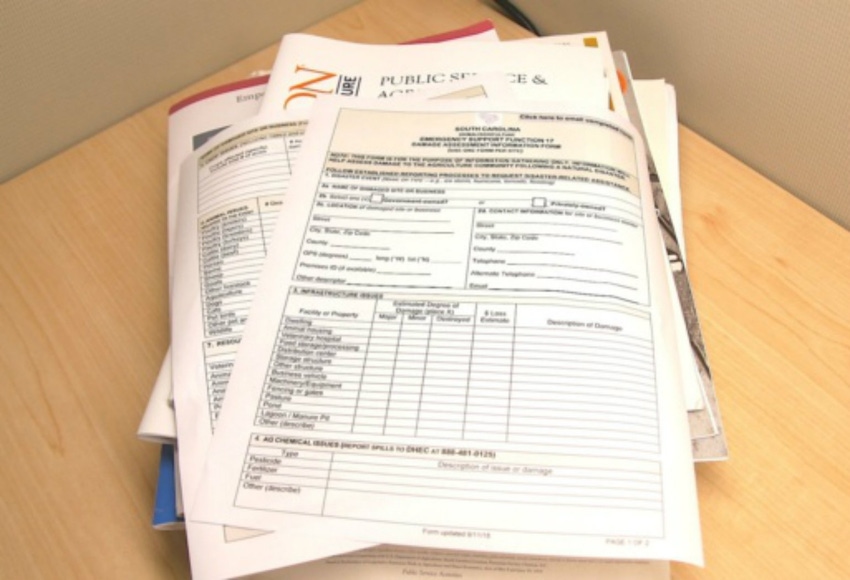September 13, 2018

The storm will pass. Then comes the work of assessing the deluge of damage.
A single damage assessment form for farmers — available online now — will help gather information that state and federal officials can use to speed relief.
“We will need to know what problems we face so that resources can be allocated to meet the need,” said Charlotte Krugler, emergency preparedness veterinarian for Clemson University Livestock-Poultry Health (LPH), a regulatory agency that oversees animal health issues. “These damage estimates also will help the state submit federal disaster applications promptly and accurately.”
The Emergency Support Function 17, or ESF-17, form has been updated for Hurricane Florence. It is posted on the LPH Emergency Preparedness, Response and Recovery page at www.clemson.edu/public/lph/ahp/emergency-prep.
The form can be filled out and submitted online after the storm, but farmers can access the page now to prepare for the post-storm assessment process.
Clemson Extension agents will assist in collecting the data as part of their roles in helping farmers after a weather disaster, said Clemson Extension Director Tom Dobbins.
“Our agents will be ready to assist our farmers in any role needed to ensure they receive the maximum disaster relief benefits,” Dobbins said. “For generations they’ve been helping South Carolina farmers in situations like this. While we hope for the best, we’re prepared for whatever comes.”
Clemson LPH personnel have been stationed in the S.C. Emergency Operations Center since its activation. The ESF-17 reports will be used to document losses to the emergency center.
Nathan Smith, a Clemson Extension economist whose responsibilities include educating farmers in risk management and production economics, said damage assessment is the first step to help farmers and agribusinesses recover from a natural disaster.
“Accurate assessments of damage are essential for such things as crop insurance and disaster aid,” Smith said. “We also encourage farmers to document damage by taking pictures before they repair or fix damage. That will help if they go to apply for aid or assistance from the Farm Service Agency and insurance claims.”
The first step in assessing damage, Krugler said, is for farmers to examine their property for hazards, especially before letting animals back onto pastures.
“Hazards include damaged fences and waste systems, downed power lines, flooded areas, gas and utility leaks and debris,” she said. “You also need to be aware of strange animals — either domesticated or wildlife — found on your property and report them so they can be checked or scanned for identification and returned to their owners.”
State Veterinarian Boyd Parr, who directs Clemson LPH, said farmers should check their animals for injuries, including feet and skin in animals that have had prolonged exposure to flooded areas, and for wire or string wrapped around limbs that may not be immediately obvious.
If animals have been off regular feeding schedules, they should be returned to regular diets slowly, he said. Proportion access to water gradually, especially for pigs: Offer small amounts initially to avoid salt poisoning.
Expect that animals may be temporarily disoriented, nervous and even fractious following an emergency, since the character, feel, smell, look and layout of their surroundings has changed. Animals that don’t normally act up may fight to re-establish hierarchy and may need to be separated. As much as possible, use familiar personnel and protocols to assist them to re-acclimate.
About the Author(s)
You May Also Like




